Collecting Stars on Stamps — Astronomy for the beclouded astronomer
A long time ago in a galaxy far away….
A long time ago in a galaxy far away…. Actually, it wasn’t a very long time ago, nor in a galaxy far away. It all happened about 35 years ago in the Andromeda Arm of a galaxy called the Milky Way, on a planet called Earth, in a country called Canada, in a province called British Columbia, in and near the community called Prince George, 800 km (500 miles) north of Vancouver).

I was an enthusiastic amateur astronomer, and the father of an even-more-enthusiastic amateur astronomer, my son, Paul. In his early teens, Paul had revealed the inquisitiveness and patience of an professional astronomer when he began using an inexpensive pair of binoculars and star charts to locate objects that my older eyes could barely resolve, if at all.

Paul’s universe expanded yet more when we bought a high-quality eight-inch Dobsonian telescope — a “Dobbie” — and three excellent eye pieces of different focal lengths. On many a night, summer and winter, we drove to the darkest skies we could find, usually several miles north of Prince George, British Columbia, near the geographic centre of British Columbia.
Dobsonian telescopes were popularized by the amateur astronomer John Dobson in the 1960s. Dobsonians are basically Newtonian telescopes, invented by the British scientist Sir Isaac Newton in 1668, and utilizing a concave primary mirror and a flat diagonal secondary mirror. Dobsonians — often called “light buckets” — are optimized to reveal faint deep-sky objects such as galaxies and nebulae. They are inexpensive, easy to use, relatively easy to transport (depending on the size of the primary mirror!), and popular in the amateur telescope-making community, where the design was pioneered and continues to evolve.
Not an astronomer’s night dream
Because of its northern latitude (nearly 54º N), Prince George is not an astronomer’s dream. At high summer, astronomical twilight, that period when faint deep-sky objects like nebulae and galaxies are visible, begins just before midnight and ends by 2:30 a.m. If you’re lucky, mosquitos won’t drive you into shelter soon after you start observing.
Throughout autumn and winter, stratus and nimbostratus clouds often stretch from horizon to horizon. When skies clear, temperatures can plunge as low as -40º Celsius (which equals -40º Fahrenheit) for days at time. In mid-winter, darkness lasts for about 13 hours, quite long enough for even a well-insulated astronomer to suffer frostbite or just...suffer! At any time of year, even if it’s dark and clear, turbulence high in the atmosphere often makes stars and planets dance and wiggle and shimmy. At any time of year, aurora borealis can fade stars out of existence and not even provide a light show — the aurora often manifests itself just as a bright whitish glow across large swaths of the northern sky.
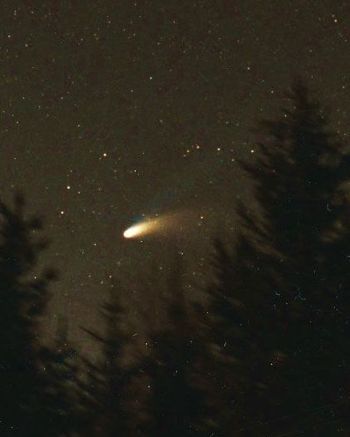
Despite many less-than-optimal observing nights, Paul and I were able to leave earth, in our imaginations at least, and plunge deep into space, well beyond the solar system and the Milky Way. As denizens of the night, we observed the nighttime world as “day people” rarely see it. Like our earliest ancestors, we watched constellations rise and set like celestial clockworks; like Galileo, we watched the silent procession of Jupiter’s moons as the planet hid them one by one and then revealed them (one by one), and in the winter of 1997 we were rewarded by the appearance of spectacular comet Hale-Bopp.
I discover Stars on Stamps
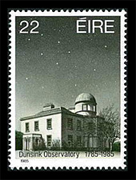
Obviously, Prince George’s climate often made astronomy impossible, and we had to stay at home to enjoy other pursuits. On one cloudy, cold night, while I was working with my Ireland stamp collection, I came across a stamp commemorating Dunsink Observatory in Dublin. I had never heard of that observatory, but the stamp made me wonder if there were other stamps with astronomical themes. A quick check of my Scott Standard Post Stamp Catalogue confirmed the existence of hundreds! I began searching for them in earnest.
My collection now contains several hundred astronomy-related topical stamps. It could contain several thousand, but one of my collecting policies is only to buy stamps, covers (used envelopes), and collateral items that appeal to me. Following is a selection of stamps, covers, postcards, and souvenir sheets from my astrophilately collection.

Some stamps, postcards, and covers from my collection.
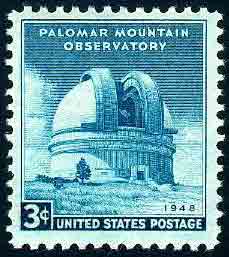
In August, 1948, the U.S. Post Office Department issued a stamp commemorating Palomar Observatory, among the best-known observatories in the world. It’s not the iconic dome that makes Palomar important, but the telescopes within it, most significantly the 200-inch Hale Telescope, which held the record as the world’s largest telescope for 27 years. Today, thanks to high-tech digital image tweaking, the Hale telescope is still charting new frontiers in the Universe, but has been somewhat eclipsed by the public relations shadow of newer earth-based facilities, not to mention the Hubble Space Telescope and dozens of unmanned observatories in space.

Not only are observatories the subject of stamps, but so are telescopes, astronomers, stars, constellations, the sun and solar system, eclipses, aurora, the moon, comets, galaxies, clusters, nebulae, and the precursor of modern astronomy, astrological mythology.
The first stamp featuring an astronomical subject
The first country ever to issue a stamp featuring an astronomical subject was Brazil. Its definitive issue of 1887 featured the constellation Crux Australis or the Southern Cross, often referred to simply as “Crux”. It’s no surprise that a devoutly Roman Catholic country like Brazil would choose to represent the Christian cross on a stamp. It is surprising that its representation of Crux is scientifically accurate: it includes the constellation’s “fifth” star, Epsilon Crucis.

Epsilon Crucis, called Intrometidal in Portuguese (translated in English as “Intrusive”) is a fourth magnitude1 orange giant about 228 light-years from Earth. Along with the four stars that give the Southern Cross its shape, Epsilon Crucis is easily visible from the southern hemisphere at practically any time of year; from tropical latitudes of the northern hemisphere, it appears near the horizon for a few hours every night during the northern winter and spring.
A Brazilian stamp issued in 1929 featured what appears to be a reversed image of the Southern Cross, with Epsilon Crucis at the left of the cross rather than the right, but it’s not an error. Instead, the image is based on an archaic type of navigational instrument called an armillary sphere, the invention of which is credited to the Greek astronomer Eratosthenes (276 – 194 BC); its name comes from the Latin armilla (circle or bracelet), since it is constructed of graduated metal circles linking the poles and representing the equator, the ecliptic, meridians and parallels. A ball representing the Earth or, later, the Sun, is placed in its center. Before the advent of the European telescope in the 17th century, armillary sphere was the prime instrument that astronomers used to determine celestial positions.
Armillary spheres are designed to represent the viewer would see if he were looking at the earth from outside graduated, imaginary spheres on which constellations, other stars, and the planets reside. Similarly, solid celestial globes are designed to show the constellations from a perspective well outside the solar system.
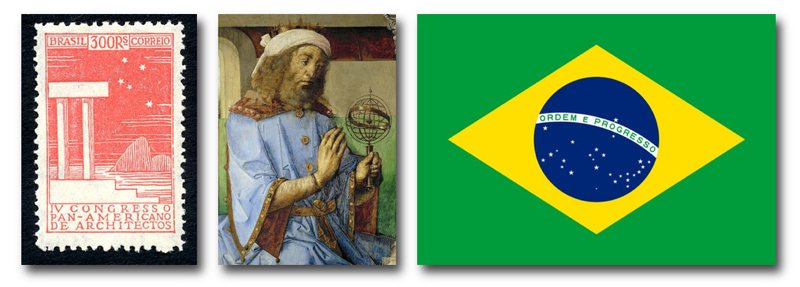
The first astrophotos on stamps
Another first in Stars on Stamps is Mexico’s 1942 Astrophysics Congress issue, which featured — for the first time — photographs of astronomical subjects, e.g. astrophotos.


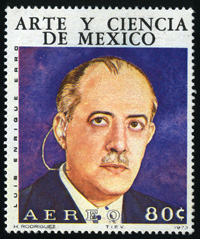
The observatory at Tonantzintla holds a unique place in the history of astronomy and astrophysics: its construction resulted from a collaborative, international effort of astronomers and astrophysicists at a time — during the Second World War — when pure science was being sidelined by the development of new military technology. The internationally famous astronomer Harlow Shapley worked with his friend, Mexican diplomat and amateur astronomer Luis Erro, to ensure that at least some technological development was directed toward scientific rather than military pursuits. Additional information about the Tonantzintla stamps and observatory is available in my VANPEX 2012 one-sheet philatelic exhibit.
Halley’s Comet
Many stamps were issued in the mid-1980s to celebrate one of the most notable of recurrent astronomical events in earth’s history, the periodic return, every 75 or 76 years, of Halley’s Comet.
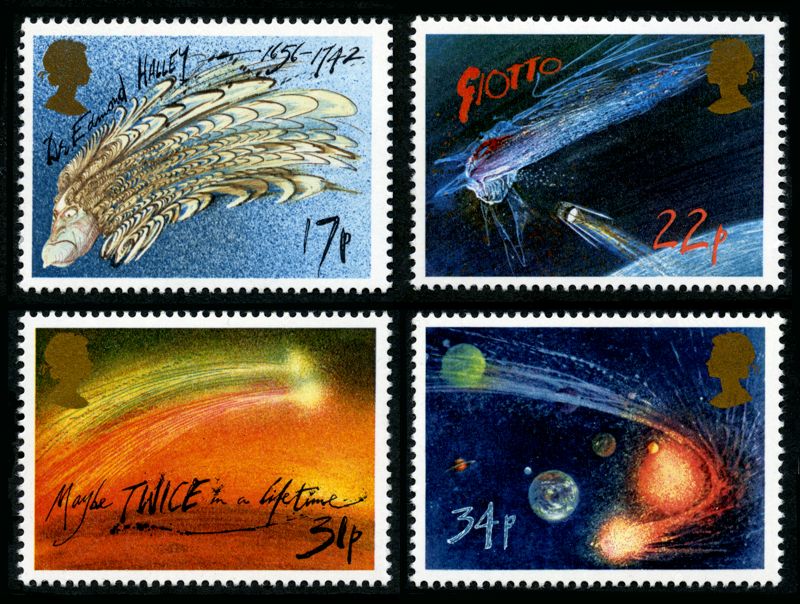
Halley’s Comet is the only short-period comet that is clearly visible to the naked eye from Earth, and the only naked-eye comet that could appear twice in a human lifetime, assuming a human lifespan of 75 or 76 years. Halley’s Comet next appearance will be in mid-2061.
Halley's returns to the inner Solar System have been observed and recorded by astronomers since at least 240 BC.That long-heralded appearance of Halley’s Comet was a bust. The comet’s tail, celebrated and feared in former times, was scarcely visible. Later 20th Century comets, notably Hale-Bopp, were far more spectacular.
Lessons from Stars on Stamps
There’s little point stamp or anything else unless your collection can teach you something. My Stars on Stamps collection has taught me good deal about the history of astronomy. One stamp in particular, issued by Norfolk Island in 1969, sent me to Google and to my library.
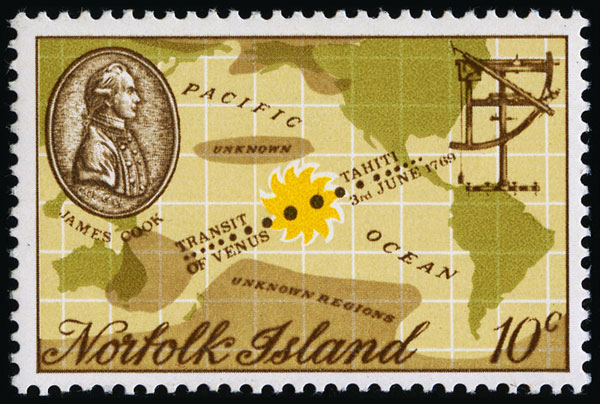
The stamp commemorates the primary purpose of Captain James Cook’s first expedition to the Pacific was to observe the transit of Venus across the face of the sun on June 3-4, 1769. Successful observations would expand scientific knowledge and improve navigation by accurately calculating the observer’s longitude. (At this time, longitude was difficult to determine and measurements were rarely precise.)

My library contains a tattered copy of A Narrative of the Voyages Around the World, Performed by Captain Cook. With an Account of His Life During the Previous and Intervening Periods, by Rev. Alfred Kippis, a Fellow of the Royal Society, first published in 1788. In his brief account of the Transit of Venus, Kippis writes that Cook and the scientists in the expedition observed a “dusky cloud” around Venus, which made it difficult to establish the times of contact. They were pleased with their success, but their pleasure was premature….
The Royal Society largely rejected the expedition’s findings, and blamed the “failure” on the expedition’s astronomer, Charles Green, who couldn’t very well defend himself because, well, he had died during the return voyage to England! Modern observations, however, have confirmed that the Cook expedition’s observations of the Venus transit were amazingly accurate for the time, and that observational difficulties resulted not from poor science but atmospheric turbulence, which had dogged observers of the transit in other parts of the world.
Kippis’s account provides a glimpse of the harsh naval discipline the Royal Navy of the 1700s: While the officers and scientists were observing the Transit of Venus, sailors stole “spike-nails” to trade to the natives, more specifically to native women in return for sexual favours. One thief received two dozen lashes, a vicious punishment which could disable a man for days.
In the foreword to the travel guide Hawaii 1961 - Fodor's Modern Guide, James Michener, the author of the best-selling novel Hawaii, mentions ships’ nails as gifts that sailors gave Hawaiian girls who were willing to raise (or trim?) their grass skirts to give sailors easier access to their charms:
It [the sex] was all free, uninhibited, generous, charming, in short good old-fashioned fun, but soon it got corrupted by complications commercial, venereal, ministerial. The girls never thought of anything so sordid as fees, but the sailors, victims of a more mercenary civilization, could not resist giving them little presents as tenders of affection. Before long fornication ceased to be its own reward. The girls were spoiled. They began asking for nails, items of enormous value in a Hawaii just emerging from the stone age. The sailors were only too happy to comply, a nail for a frail,2 and captains began to eye their ships nervously for fear they might come apart at the seams.
Tycho Brahe, who had a metal nose, challenged Aristotlean astronomy

Two Danish stamps in my collection, pictured at the left, commemorate the 16th Century Danish astronomer, Tycho Brahe. Working without a telescope (which hadn’t been invented), Brahe made a significant observation that contradicted Aristotle’s theory of the immutability of the heavens.
I learned about Brahe’s 1572 observation3 of a supernova which unexpectedly appeared in the constellation Cassiopeia; the supernova, an explosion of a star, is shown as a white star at the top of the stamp. Brahe himself is shown on the other stamp, displaying his metal nose.4
The next year, in 1573, Brahe published De nova stella (On the new star), arguing that since the Stella Nova, unlike the planets, did not move against the background of other stars, it could not be a planet. And, since it was in a location that had previously been assumed to be empty space, Brahe challenged the Aristotlean belief in the inalterable perfection of the “supralunary sphere” (everything beyond the orbit of the moon) and the corresponding belief that the “sublunar sphere” (Earth) was the centre around which everything else moved. Brahe criticized those who dismissed his observations, writing in the preface to De nova stella, “O crassa ingenia. O caecos coeli spectatores" ("Oh thick wits. Oh blind watchers of the sky").5

Brahe’s Nova stella is still with us, and still where it was 1572, in the constellation Cassiopeia. It exists as a still-expanding globe of gas and high-energy particles and enjoys three astronomical designations: SN 1572 (Supernova 1572), B Cas (Cassiopeia B), or 3C 10 (Third Cambridge Catalogue of Radio Sources 10). It’s invisible in wavelengths that we humans evolved with, but x-ray images reveal its structure, as shown in the image at the left.
Galactic distances
Brahe was correct in his belief that the Universe was indeed alterable, but even he could not have comprehended the power of a supernova: astronomers believe that a supernova as close to earth as 26 light years would destroy our ozone layer and result in another mass extinction event, like that of the dinosaurs, except that the extinction would include us. A star that is 26 light years from earth is very close in galactic terms. Astronomers estimate the diameter of the observable universe to be about 3,600,000,000 light years in diameter. Or, to put it another way…
Space is big. Really big. You just won’t believe how vastly, hugely, mind-bogglingly big it is. I mean, you may think it’s a long way down the road to the chemist’s, but that’s just peanuts to space. — The Hitchhiker’s Guide to the Galaxy, by Douglas Adams
Only in the 1960s, scientists working with a telescopes at Palomar Mountain discovered the remnants of Brahe’s supernova. The supernova has since been confirmed as a Type Ia, in which a white dwarf star accretes matter from a companion until it reaches the Chandrasekhar Limit and explodes. A shell of gas is still expanding from its centre at about 9,000 km/s.
No less fascinating than astronomy itself are the biographies of the astronomers. I learned this oddball fact about Brahe: He wore a silver nose prosthesis after his own flesh-and-blood nose was sliced off in a duel.
The Hubble Space Telescope opens earthbound eyes
With the revolution in digital imaging and the launching of satellites and space probes, astronomers have taken giant leaps in their understanding of the Universe. Images obtained by the Hubbel Space Telescope, launched in 1990, have opened earthbound eyes to sights that we never suspected. The U.S. Hubbel Telescope issue of 2000 celebrates some of those incredible images:
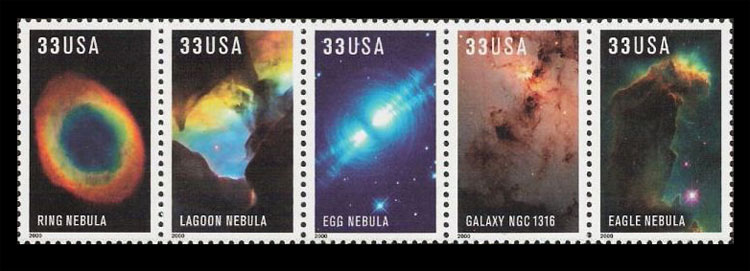
Constellations
Among the most attractive of astronomy topical stamps are those illustrating the constellations, those bright stars that seem to earthbound cultures to represent particular shapes, often representative of mythological beings. They are also called asterisms.

Constellations that we on earth easily recognize, such as the Big Dipper, don’t actually exist in nature. All stars are at such a great distance from earth that we see them as if they are on a plane at right angles to our line of sight, but in reality the individual stars of a given constellation are at varying distances from earth. Someone on distant planet might see the same stars, but from such a different perspective that they would form a very different shape, or no particular shape at all.
I no longer live in Prince George, but in Vancouver, where clouds and smog often prevent visual astronomy. Even on clear nights, serious light pollution obscures all but the brightest objects in the sky. But my Stars on Stamps collection still allows me to continue my voyage of discovery through the Universe.
-
In astronomy, magnitude refers to the brightness of a star or other object in relation to other stars or objects. It seems counter-intuitive, but a high-magnitude star is dimmer than a low magnitude star. Thus, the sun has an apparent magnitude of −27, while Pluto, once considered a planet but now considered to be an asteroid, is so dim — apparent magnitude of 14 — that it can only be seen with large telescopes. ↩︎
-
A North American term for a weak, delicate woman ↩︎
-
Tycho Brahe did not necessarily discover his Nova stella, which was independently observed by many individuals. It was one of some eight supernovae visible to the naked eye and recorded in that period. ↩︎
-
While studying at the University of Rostock in Germany in 1566, Tycho Brahe lost part of his nose in a nighttime sword duel against fellow Danish nobleman and third cousin, Manderup Parsberg. They had quarrelled over the legitimacy of a mathematical formula, and since neither had the resources to prove the other wrong, they ended up resolving the issue with a duel, which resulted in Tycho losing the bridge of his nose and developing a life-long interest in medicine and alchemy. It isn’t known who “won” the duel, but the cousins made up. Brahe, however, is said to have worn a prosthesis for the rest of his life. In 2010 his body was exhumed; an examination of facial bones showed that the prosthesis he was buried with made of bronze, but he likely had multiple nasal prostheses to choose from in life! (Prostheses were worn with pride by wealthy amputees in Brahe’s time.) ↩︎
-
Brahe’s characterization of his skeptics — "Oh thick wits. Oh blind watchers of the sky" — would fit the majority of today’s Conservative parliamentarians and legislators in Canada and Republican congressmen in the United States. ↩︎